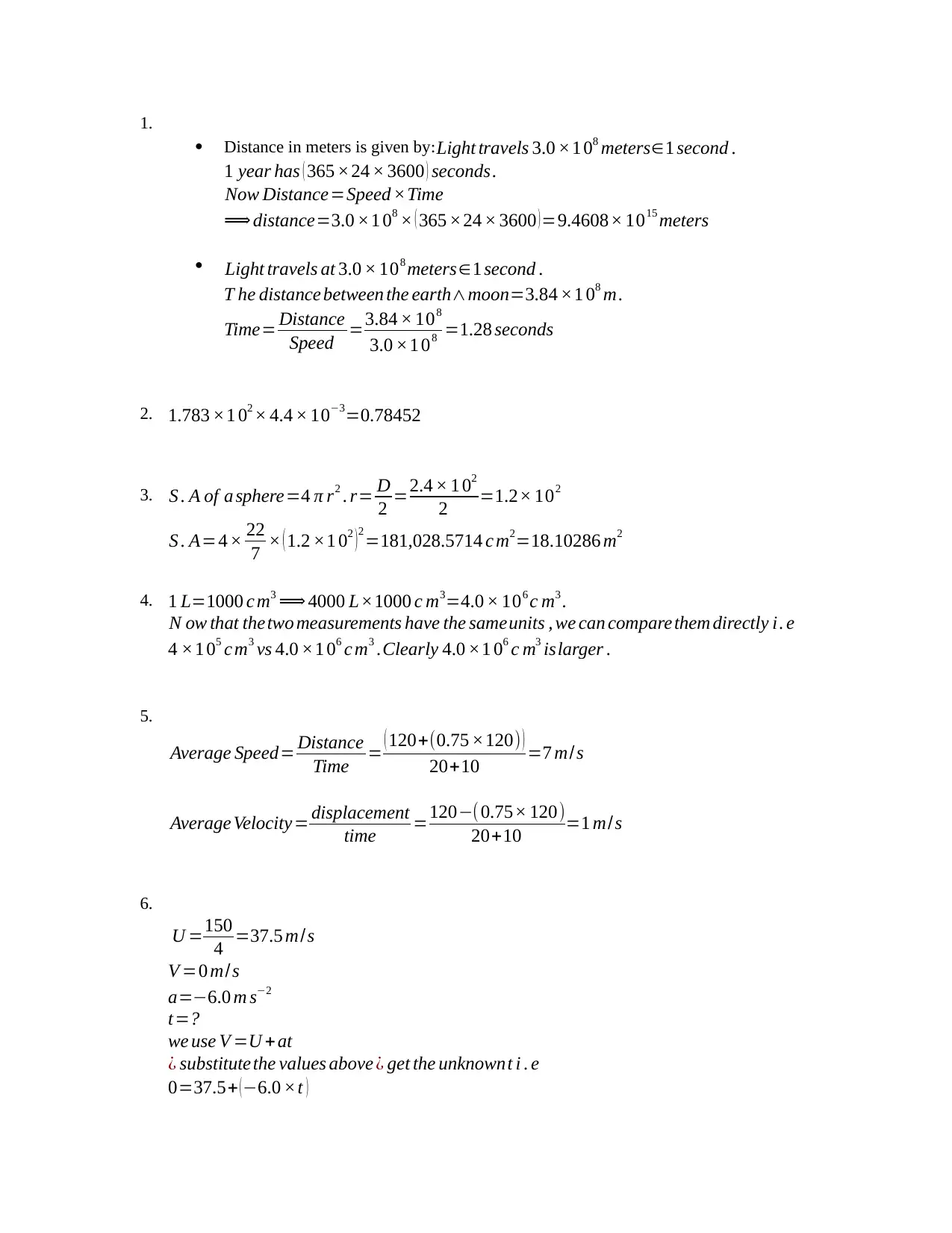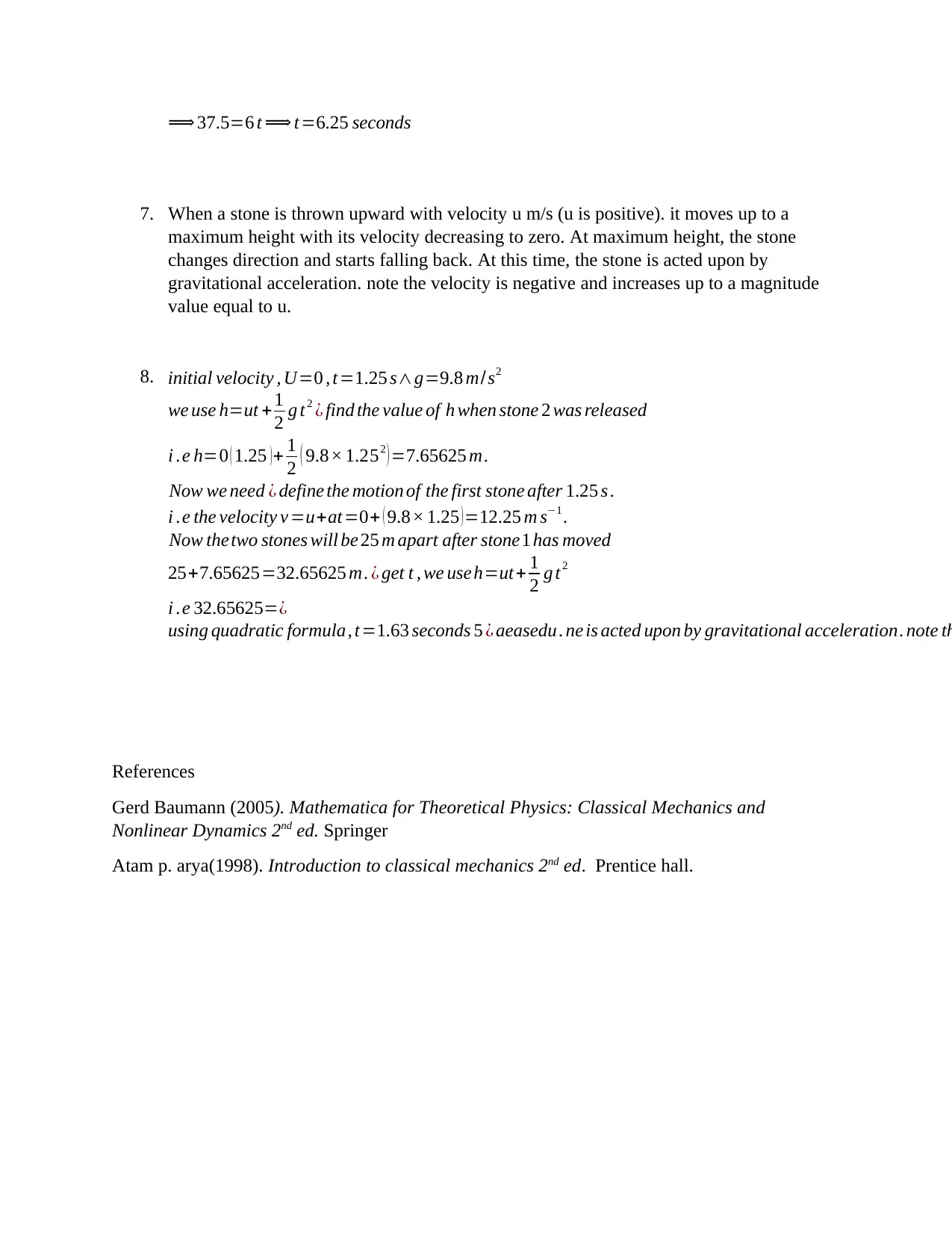Comprehensive Physics Assignment: Kinematics, Motion, Speed, Distance
VerifiedAdded on 2023/05/30
|2
|512
|465
Homework Assignment
AI Summary
This assignment provides detailed solutions to a set of physics problems. It covers concepts such as calculating distance using the speed of light, determining travel time between the Earth and the Moon, simplifying expressions with scientific notation, calculating the surface area of a sphere, comparing volumes, and analyzing average speed and velocity. Additionally, it addresses kinematics problems, including determining the time it takes for an object to stop under constant deceleration and analyzing the motion of objects thrown upward under gravitational acceleration. The assignment uses relevant formulas and provides step-by-step solutions to each problem, offering a comprehensive understanding of the physics principles involved. Desklib offers more solved assignments and past papers for students.
1 out of 2








![[object Object]](/_next/static/media/star-bottom.7253800d.svg)